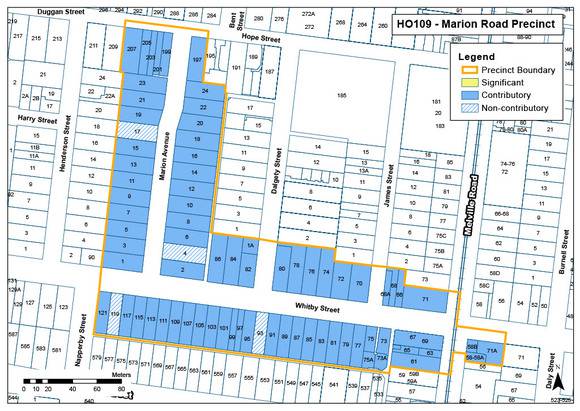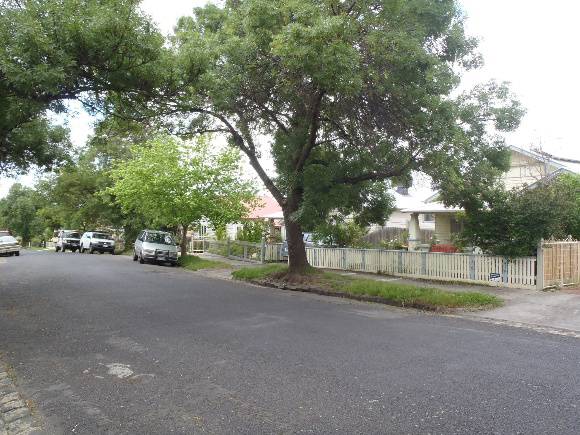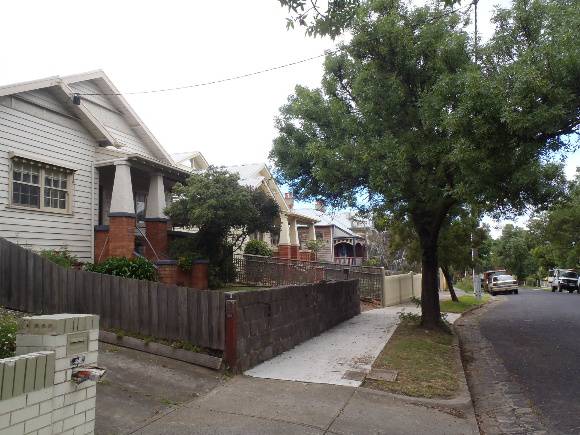| Back to search results » | Back to search page » |
|
Marion Avenue
Location1-23 & 2-24 MARION AVENUE, 197-207 HOPE STREET, 73-121 & 66-86 WHITBY STREET, and 58B MELVILLE ROAD, BRUNSWICK WEST, MORELAND CITY
File Number3524LevelIncluded in Heritage Overlay |
|
Statement of Significance
What is significant? The Marion Avenue Precinct, comprising houses and buildings at 197-207 Hope Street, 1-23 and 2-24 Marion Avenue, 71A-121 and 66-86 Whitby Street, and 58B and 61-71 Melville Road. How is it significant? The Marion Avenue Precinct is of local architectural and historical significance to the City of Moreland. Why is it significant? The Marion Avenue Precinct is of local architectural significance as a consistently intact example of streets of Inter-War Bungalow style housing, with the greatest level of intactness in Marion Street. Many of the bungalows in Marion Street appear to be standard or nearly identical in design, suggesting the influence of a single builder or developer. Whitby Street also comprises mostly bungalows, with the notable exception of 19th century terraces at 97-99 Whitby Street, and a cottage at 91 Whitby Street. The former State Bank at 58B Melville Road and to a lesser extent the Moderne building at 71 Melville Road are focal points for this precinct. The Marion Avenue Precinct is of local historical significance for its associations with dairying and grazing activities along the Moonee Ponds Creek, to the west of Marion Avenue. Jeremiah Flannery grazed both cows and goats along the Moonee Ponds Creek in the 1890s, and his descendants still owned land at the south-western end of Whitby Street in the 1950s. Marion Street was part of an early 1920s development, being first noted in the Sands and McDougall directories in 1920. Non-Contributory properties include: Marion Avenue: 4 and 17.
Group
Residential buildings (private)
Category
Residential Precinct






